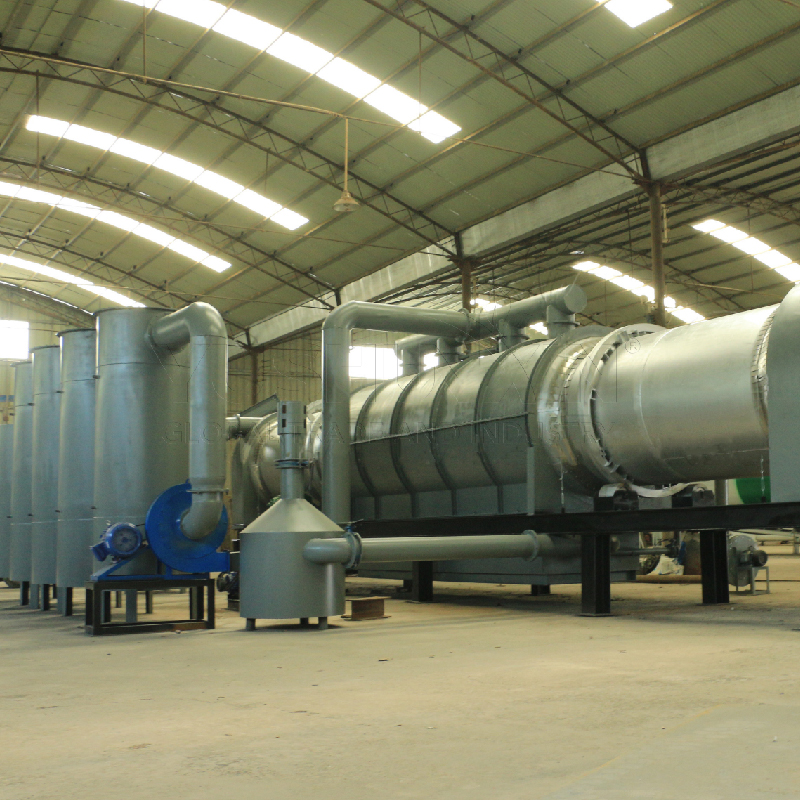Les matériaux adaptés à une ligne de production de carbonisation continue et les étapes du processus de production
Les matériaux adaptés à un ligne de production de carbonisation continue inclure:
Bois: Cette catégorie comprend les troncs d'arbres, les copeaux de bois, sciure, et déchets de bois.
En bref: Des coquilles de noix comme des coquilles de noix de coco, coquilles de noisettes, coquilles de noix, etc..
Résidus agricoles: Il s'agit essentiellement de résidus agricoles comme la paille de riz, paille de blé, et de la paille de maïs.
Résidus de pâte à papier: Les déchets comme les résidus de pulpe peuvent également être convertis en charbon actif.

Les étapes typiques d'une ligne de production de carbonisation continue comprennent:
Préparation des matières premières: Les matières premières sont d'abord traitées pour éliminer les impuretés, et ils peuvent être broyés pour préparer leur entrée dans le four de carbonisation.
Carbonisation: Les matières premières subissent une carbonisation dans un four de carbonisation continue. Cette étape se produit généralement dans des conditions de température élevée et de faible teneur en oxygène pour transformer les matières premières en carbone..
Refroidissement et collecte: Après carbonisation, le matériau carboné produit doit être refroidi. Dans une chaîne de production continue, les refroidisseurs cycloniques ou autres équipements de refroidissement sont souvent utilisés pour réduire la température. Après refroidissement, le matériau carboné est collecté et emballé.
Gestion environnementale: Pendant le processus de carbonisation, il est essentiel de gérer le traitement des gaz résiduaires et des résidus pour minimiser l’impact environnemental.
Ces étapes sont cruciales dans la production de charbon actif et d'autres matériaux à base de carbone dans une chaîne de production par carbonisation continue., bienvenue à nous contacter pour plus de détails.


